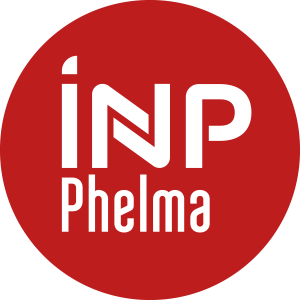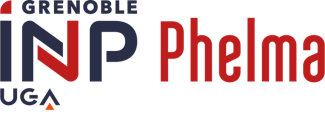Number of hours
- Lectures 12.0
- Projects 0
- Tutorials 12.0
- Internship 0
- Laboratory works 0
ECTS
ECTS 2.0
Goal(s)
We start from basic thermodynamics. We use it for phase stability/meta-stability, include surface tension as energy barrier to deduce local mechanisms of nucleation/germination. From this finest scale to intermediate scales (local and wall boiling), then larger and industrial scales (convective boiling, critical heat flux, post-critical). Mainly liquid-vapour phase change (condensation and boiling), but also limited studies of other phase change cases (e.g., metal solidification). Final part of the lecture (4 hours) dedicated to the family of phase field models (van der Waals, Cahn-Hilliard, Allen-Cahn).
Contact Olivier LEBAIGUE, Antoine BONNEFONT, Elsa MERLEContent(s)
24 hours
0. Importance of phase change in energy production and transfer
1. Review of fundamental thermodynamic principles
1.1. Conditions for thermodynamic equilibrium: Meta-stable state and phase stability
1.2. The Gibbs number of phase rule and the stable equilibrium surface
1.4. Phase diagram for a pure substance
1.4. Binary mixtures
1.5. First and second order phase transitions
2. Surface tension
2.1. Surface tension at a liquid-vapor interface
2.2. Contact angle, wetting and spreading
3. Homogeneous nucleation
3.1. Conditions for the stability of a vapor bubble in its liquid
3.2. Stability of thermodynamic equilibrium
3.3. Kinetic limit of nucleation
4. Heterogeneous nucleation
4.1. Homogeneous nucléation on a smooth wall
4.2. Nucleation from entrapped gas or vapor in cavities
4.3. Criteria for the onset of nucleate boiling
4.4. Bubble growth in the bulk of a liquid
4.5. Bubble growth in the vicinity of a heated surface
4.6 Bubble departure diameter and frequency of bubble release
5. Pool Boiling
5.1. The Nukiyama experiment
5.2 Natural convection
5.3. Nucleate boiling
5.4. The boiling crisis
6. Internal flow convective boiling
6.1. The wise use of existing correlation’s
6.2. Useful non dimensional numbers
6.3. Two-phase flow regimes and flow regime maps
6.4. Quality and energy balance
6.5. Temperatures and heat exchange coefficients along a heated tube
7. Condensation of pure vapor
7.1. Drop-wise and film condensation
7.2. The Nusselt approach: Integral analysis of a laminar film condensation
7.3. The correlation approach of film condensation on flat, vertical surface
8. Kinetic theory applied to phase change at a liquid-vapor interface
8.1. Introduction to interfacial thermal resistance
8.2. Simplified model
8.3. Short presentation of the Schrage model
9. Short presentation of solidification processes
10. Introduction to "Second Grade" and "Phase-field" models
Prerequisites
Module starts with some prerequisite reviews.
Session1 : written exam (2h) + Course notes permitted (1 double-sided page) + Calculator required.
Session2 : oral exam
Écrit 100%
This course brings 3.0 ECTS to students in UE Energy JUAS-ESIPAP
This course brings 3.0 ECTS to students in UE Energetic
This course brings 1.0 ECTS to students in TU Reactors JUAS/ESIPAP (GEN S9)
- Thermodynamique des états de la matière, P. Papon & J. Leblond, Hermann, 1990.
- Liquid vapor phase Change phenomena, Van P. Carey, Hardback, 2nd Ed., 2007.
- Convective boiling and condensation, John G. Collier & John R. Thome, Oxford Science Publication, 1996.



